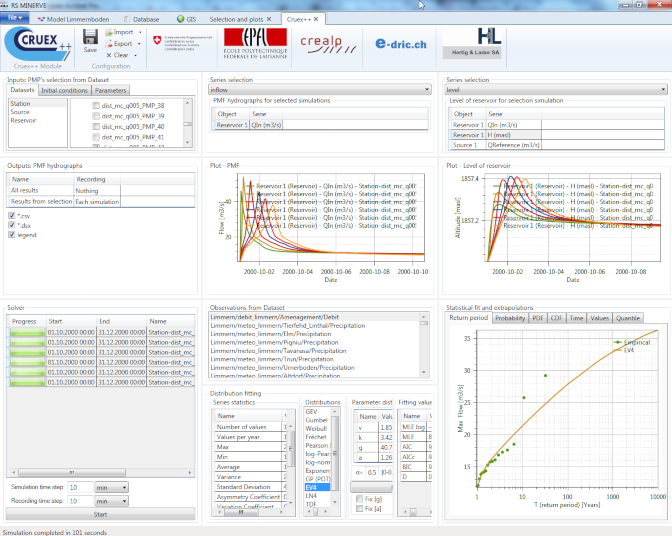Description
The CRUEX++ methodology, completed in 2017, allows for estimation of the hydrograph of extreme floods in alpine catchments and for verification of dam safety regarding floods. The methodology is made available through the CRUEX++ plugin designed for RS MINERVE, a software for hydrologic and hydraulic modelling of catchments and reservoirs. RS MINERVE as well as the CRUEX++ plugin can be downloaded in the Tools section.
RS MINERVE
RS MINERVE allows semi-distributed conceptual hydrological modelling including the hydrological models GSM-SOCONT, HBV, SAC and GR4J. Hydraulic elements like reservoirs, spillways as well as pumps and turbines can easily be incorporated in the model to simulate the hydrological processes in mountainous catchments including complex hydroelectric power plant systems.

CRUEX++ Plugin
The CRUEX++ Plugin allows combining different user defined rainfall events with initial terrain conditions for the hydrological simulation. Furthermore it allows for visualizing the evolution of the reservoir levels, inflow and outflow discharges for different underlying meteorological events. The CRUEX++ Plugin provides an overview of the hydrographs and the related water levels to facilitate the determination of design and safety floods for dams. Furthermore, the plugin allows fitting statistical distributions to systematic flow data. Both conventional statistical distributions such as General Extreme Value, Generalized Pareto and Pearson III and the particular type of upper-bounded statistical distributions have been implemented in the plugin. Upper-bounded statistical distributions allow for taking into account the possible maximum flood (PoMF) in statistical analyses.
